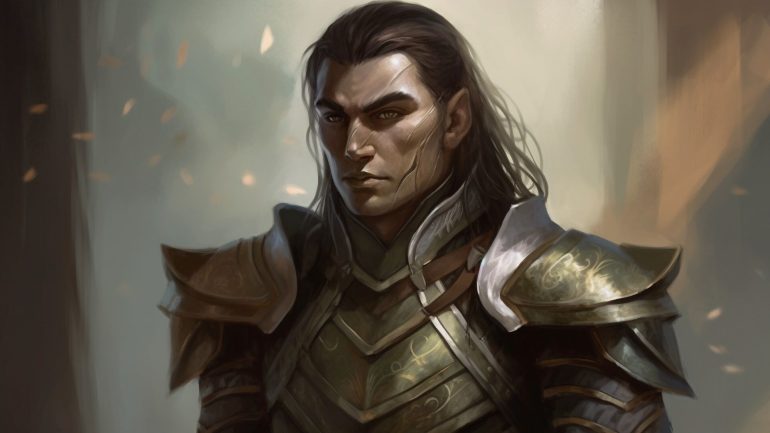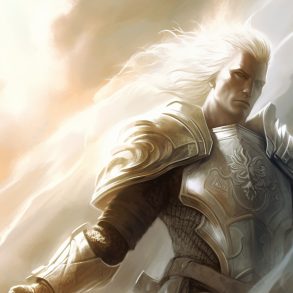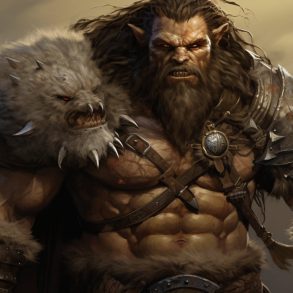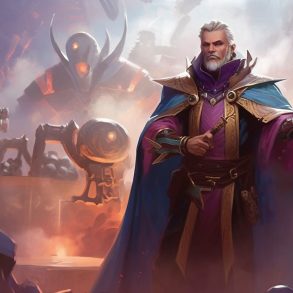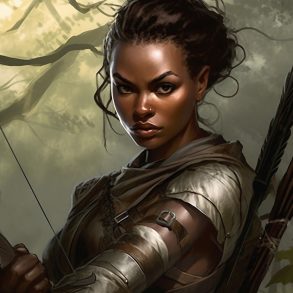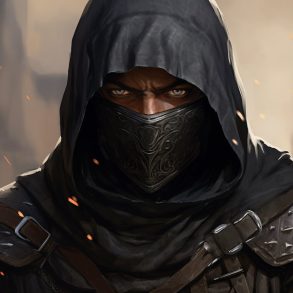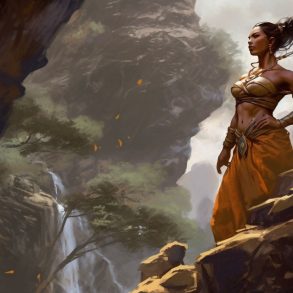After many hours spent in the sparring yard, countless miles run, and an inordinate amount of cold meat punched, you’re finally prepared to step into the vast, intimidating world. The local guard doesn’t satisfy your ambition; you seek to test your mettle, aspire for fame and fortune, and perhaps even save the world while showcasing your martial prowess for all to admire. You want to be a Fighter, and with this Fighter DnD 5E guide, we aim to facilitate your journey towards this goal. This class offers an array of choices that you’ll need to navigate on your path to glory, and here at Dice Cove, we’re ready to guide you.
In this Fighter DnD 5E guide, we’ll train you on the options available to a Fighter, as well as supportive choices you can make to build your character to fulfill your ambitions. While perusing this guide, you might find our articles on DnD 5E terms and the list of DnD books (along with their common abbreviations) beneficial.
This Fighter DnD 5E guide will evaluate each option for the Fighter on a scale of 1-5. This is a rating of the abilities’ potency and overall usefulness, primarily focusing on combat where appropriate. However, we will still evaluate every aspect of being a Fighter to aid you in weighing any choices you might be considering at a glance. This way, you’ll know what to expect and can make changes accordingly if desired. The rating scheme is:
1 – Usually a bad choice, to be avoided
2 – Below average, this can apply to powerful but very niche abilities
3 – Average to Good, you won’t go wrong with it
4 – Very good
5 – Amazing, a must-have if there is such a thing
Be sure to check our other DnD 5E class guides: Artificer 5E guide, Barbarian 5E guide, Monk 5E guide, Paladin 5E guide, Ranger 5E guide, Rogue 5E guide, Sorcerer 5E guide, and Warlock 5E guide.
Changelog
Version 1.5
Version 1.4
- Added Spelljammer races
Version 1.3
- Added Mordenkainen Presents: Monsters of the Multiverse races
Version 1.2
- Added Owlin race and Strixhaven feats
Version 1.1
- Added races: Harengon, Fairy, and FToD Dragonborn
- Added feats: FToD Gift of… feats
Version 1.0
- Initial version
Disclaimer
This rating system exists to best help you understand the effectiveness of all the options available to the class for you to build and enjoy your character. Remember though, your fun comes first; it’s actually very difficult to build a character that is entirely bad in DnD 5E, so if you have a concept that doesn’t rate highly, you might still have fun playing it. This is a guide, not a contract written by Asmodeus. Let it advise you and not force you away from your own ideas.
It’s recommended to have your book/PDF/DnD Beyond page open to reference and follow along with the guide.
Table of Contents
Fighter DnD 5E Class Abilities Guide
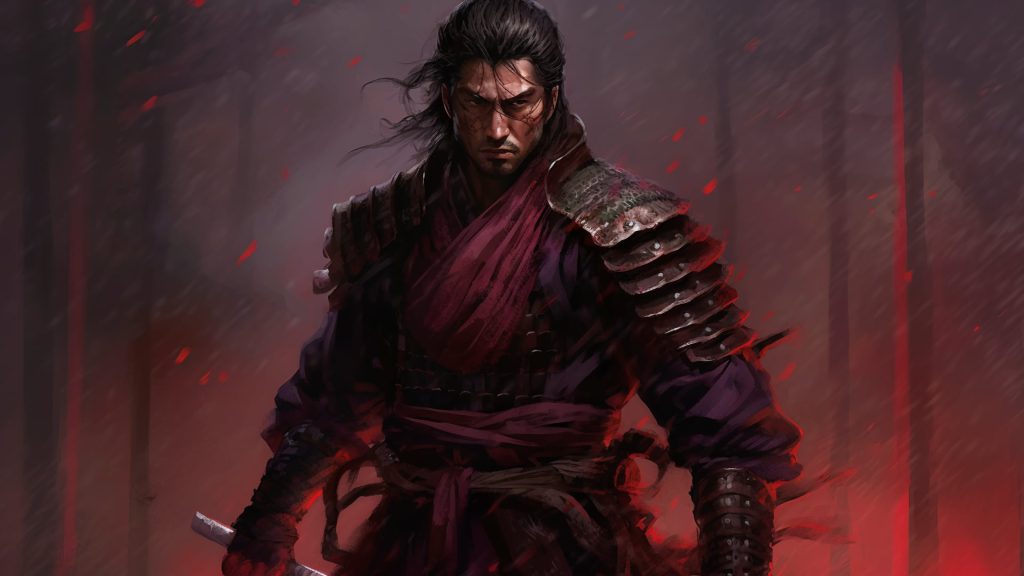
Hit Dice 4 – A d10 is the standard for most martials and almost as good as it gets, you’ll have a decent amount of HP for melee and a good amount for ranged.
Proficiencies
Armor 5 – Much like a famous boy Wizard, you took the lot, giving you a variety of build options.
Weapons 5 – You can choose whatever weapon you like best, which supports the Fighter’s place as the most customizable martial.
Tools 1 – You get none, which is unfortunate but not needed for what you’re intended for.
Saving Throws 4 – Constitution saves are often damage effects combined with nasty debuffs like the poisoned condition and if you pick up spell casting, concentration saves. Strength saves may be classed as a weak save, but they’re prevalent among lower CR monsters and often result in being knocked prone, which leads to melee attacks against you having advantage. A strong pair of saves.
Skills 2 – Eh, you only get two but you at least have quite a broad list to choose from. The standout choices are Perception and Athletics, which you can leverage for grapple and shove-based tactics.
Fighting Style 5 – A customizable boost that facilitates, or enhances, whichever type of Fighter you want to be. We will go into each style more in-depth a little later on.
Second Wind 4 – A combat-compatible self-heal that does enough to shrug off a blow or two, no matter the level, and recharges on a short rest? That’s a fantastic ability; the only thing holding this back from being a 5 is how swingy the heal can be in Tier 1, when you’re more reliant on the roll of the d10.
Action Surge 5 – Everyone loves Action Surge, whether you’re using it to make ALL OF THE ATTACKS, or something else like using a magic item or dashing whilst still attacking; its power and utility are well-known. Fun fact: this is the only ability in the game to allow you to cast two leveled spells in a single turn, take that Quickened Spell! You get a second use of this ability per short rest at 17th level, which is a massive spike in power.
Ability Score Increase 5 – This is a feature universal to all classes, so it isn’t normally included in our guides, however, the Fighter gets two additional ASIs: one at 6th level and one at 14th level. That’s not only a lot of additional stat bumps or feats but the one at 6th level makes a lot of builds more viable as it comes in the levels that are most played.
Extra Attack 5 – Most martials get Extra Attack as a damage increase at 5th level, but the Fighter gets a third attack at 11th level, and a fourth attack at 20th level. This constitutes all of the main Fighter class’ damage increases and capstone and synergizes well with a number of different abilities and spells which trigger on attack hits.
Indomitable 3 – This feature usually gets a bad reputation, but is actually pretty good as long as you understand what it can achieve. It will make it unlikely for you to fail a save you’re strong at and give you a better chance at those you have mediocre modifiers in, you just need to recognize when it’s not worth using. For example, if the only way you could pass a save is with a roll of a 20, it’s probably not worth using Indomitable unless you think the consequences for failure would be very bad. Much like Extra Attack, this ability gets additional uses at later levels, specifically one at 13th and 17th level.
Fighting Styles Guide
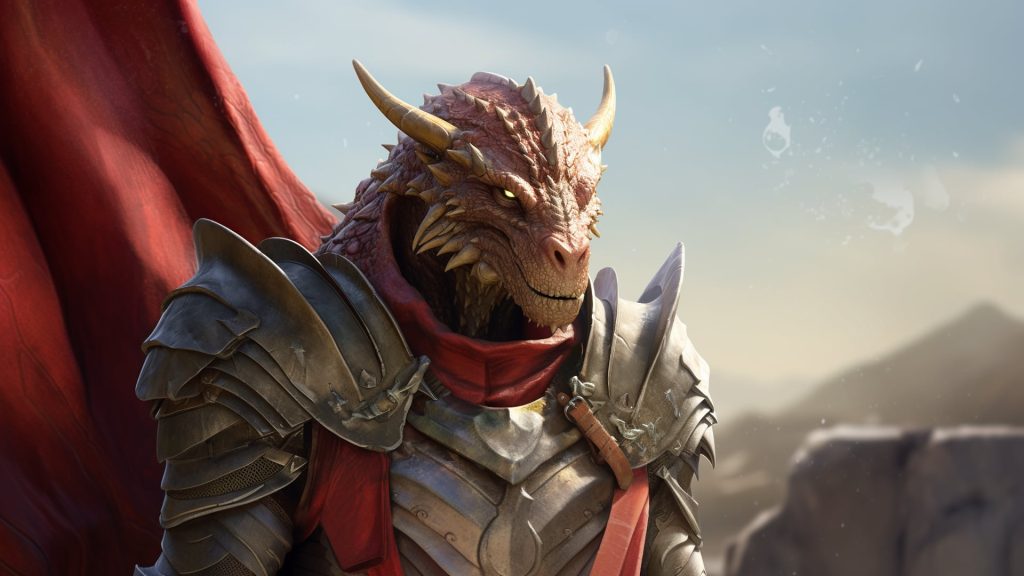
The contents in the following list of Fighting Styles are arranged alphabetically but divided by the books they are found in to make it easy to see what you can choose from if certain sources are not allowed at your table. Please note the styles found in TCoE are listed as optional class features, so be sure to check with your DM before choosing them.
PHB
Archery 5 – Dungeons & Dragons 5E uses a system called bounded accuracy, which means any bonus to your attack bonus is surprisingly potent as overall ACs don’t get very high. Part of what makes Archery so great is it can partially offset the to hit penalty the Sharpshooter feat imposes for its +10 damage. Its intended purpose is likely to act as a counter for the +2 AC offered by half cover, so you can fire into melee without reduced accuracy.
Defense 4 – For the same bounded accuracy reasons which make Archer nice, a bonus to your AC is always going to be welcomed. This can either compensate for not carrying a shield, or push a plate and shield wearer’s AC up to 21!
Dueling 5 – A great flat damage increase that scales well with your increasing number of attacks. Whilst flat bonuses don’t multiply on crits like additional dice, they reliably raise the floor, average, and ceiling of your damage.
Great Weapon Fighting 2 – As long as you choose to reroll at appropriate times, whenever you roll under average damage, this is a boost to your average damage. However, it is not a large bonus, or even a guaranteed one, and the rerolling can be a little tedious in play. I would generally recommend Defense overtaking this, or Superior Technique if you’re looking for damage potential.
Protection 2 – This style can be a great defensive option if you’re looking to be a more tank or supportive Fighter. This only rates at a 2 as it relies on wearing a shield and having the ally you wish to protect within 5 feet of you, the latter of which you cannot control completely, whilst not guaranteeing they won’t get hit.
Two-Weapon Fighting 5 – TWF enables effective use of this kind of combat, the addition of the modifier to the bonus action attack makes TWF one of the best damage options for Tier 1 and remains competitive throughout Tier 2 and beyond.
TCoE
Blind Fighting 3 – This is a very niche style: On the one hand, it allows melee Fighters to function virtually unhindered by visual problems like fog, darkness, and invisible creatures. On the other hand, it’s not very useful at all to ranged Fighters or anyone, if those circumstances don’t come up, unlike other styles which are more universally applicable. What makes this a 3 instead of a 2 is the potential for a party to build around spells like Fog Cloud and Darkness (particularly with Warlocks and Shadow Sorcerers) to gain advantage against enemies, and disadvantage against being attacked themselves.
Interception 4 – As a style, Interception is similar to Protection, but easier to use as you only need any kind of simple or martial weapon, not specifically a shield. What contributes mostly to the higher rating is the damage reduction triggered when a creature is hit, so you have no potential to waste your reaction. The only downside is unlike Protection, this can’t negate crits or turn a hit into a miss completely, although you can reduce the damage to 0 if you’re lucky.
Superior Technique 3 – A great way to introduce a little bit of variety and additional complexity into most Fighter subclasses; being a short rest resource synergizes with Second Wind and Action Surge so this feels intuitive to ration. Only a single d6 Superiority Die (SD) isn’t much, so choosing the right maneuvers and the right time to use them is important. Good maneuvers to choose include Precision Attack and Trip Attack. This goes up to a 4 for a Battle Master, as it will instead become part of your SD pool, increasing to a d8 to begin with, and growing further as you level. It also adds another maneuver to your options, helping you grab everything you want in earlier levels.
Thrown Weapon Fighting 5 – Much like TWF above, this style gets a 5 partially for enabling an entire style of play for your PC. RAW, you would have trouble building a character who specializes in throwing darts or daggers if you have Extra Attack, as you would be throwing more weapons than you could draw with your single object interaction. This style completely negates that problem by allowing you to draw a weapon with the thrown tag as part of the attack, much like you would draw an arrow as you fire it. In addition to that, it also adds a flat +2 damage like Dueling, however, this is more impactful on thrown weapons due to their smaller damage dice.
Unarmed Fighting 5 – Unlike some of our other styles, this one doesn’t necessarily enable unarmed combat, there’s plenty of races that give a 1d4 natural weapon, but it certainly makes it more effective. In fact, in tier 1 this makes your unarmed strike do more damage than a Monk’s, and this remains true until Tier 3 if you commit both hands to it. The additional action economy-free 1d4 damage to creatures you’re grappling is a nice bonus. A must-have if you want to play a pugilist Fighter.
Optional Class Features (TCoE)
The Fighter only gets additional features from Tasha’s, no substitution features. The additional Fighting Styles have already been covered above, and we will go through the additional maneuvers for the Battle Master in this section.
Martial Versatility 3 – This is a nice get out of jail free card if you have made some build choices with your Fighter you regret. This only receives a 3 because it isn’t actually adding anything new or improving an existing feature, rather, it’s just codifying a ruling a lot of DMs would make if approached by their players about changing their choices.
Maneuver Options
Ambush 5 – This maneuver is great because the results of its use are wider-reaching than a single turn or attack. A single SD can change a Stealth roll from a failure into a success, or advance you multiple places up the initiative order. Overall a nice boost for Dex-based Fighters, but a lifeline to Str-based Fighters who would likely have poor modifiers, and perhaps even disadvantage on those rolls.
Bait and Switch 2 – This is similar to a monster ability, and can be nice for saving squishy or seriously injured party members from melee, however, that’s a very niche use given the positioning required.
Brace 3 – A nice option to have, this maneuver basically gives you the Polearm Master reaction attack. This only warrants a 3 because it’s nothing but damage and devotes your reaction to an attack also given by a popular feat.
Commanding Presence 5 – Out of combat utility is always welcome on a Fighter, and this supports the Fighter as a face character rather than just a killing machine.
Grappling Strike 3 – The rating for this is held back by it being rather niche: you have to be a melee character with a free hand and the creature needs to be of a size you can actually grapple. The good side of this is it significantly improves the popular tactic of shoving a hostile creature prone and grappling them to keep them that way. Normally (unless you took Tavern Brawler), that would consume two attacks and do no damage, but this allows you to not only keep some damage but makes your grapple check more likely to succeed.
Quick Toss 2 – This is a very cool maneuver that’s fairly narrow in scope; it provides a damage boost primarily for throwing builds, like those making use of Thrown Weapon Fighting, and potentially archers who are within range of an enemy to use a thrown weapon. However, a hidden strength of this maneuver is aiding melee Fighters in engaging distant enemies after defeating whomever they were already in melee with. Remember, a free hand is needed to use this maneuver.
Tactical Assessment 5 – Much the same as Commanding Presence, allowing the Fighter to have a larger impact on other pillars of play is a great maneuver.
Fighter DnD 5E Stats Guide
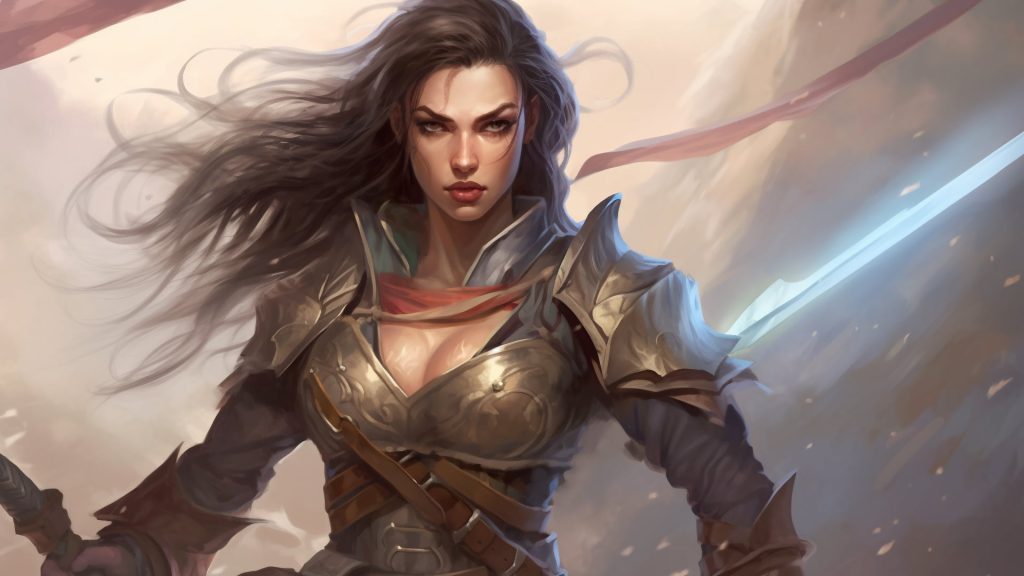
Fighters are typically SAD in either focusing on Strength or Dexterity as their primary stat, which usually also provides their AC. Many subclasses make use of different secondary stats, however, and as the Fighter is primarily SAD, with two additional ASIs, they can afford to have a more diverse array of stats than other classes. It’s important to consider your ability score array at character creation to make sure you have the numbers you need, where you need them for your build. Where you see a rating with two numbers separated with a /, the second number is the rating if you are not using this stat as your primary:
Strength (5/1) – This is essential for you if you want to use polearms, great weapons, and/or heavy armor and a big help if you want to shove and grapple. You should aim to start with a 16 and max as soon as possible, if Dex is your primary a 10 would suffice here, but a 12 would be nice if you can afford it. This is a stat essential for Cavaliers, as it dictates how many special attacks they can make.
Dexterity (5/3) – If you want to play a ranged character, a switch hitter, or use finesse weapons this is a must. Even if you use Strength as your primary stat, it’s very beneficial to have Dexterity as high as you can afford.
Constitution 4 – Hit points and saving throws against nasty effects, as a martial this is important for you and you should aim for a 16 here. The higher the better, but going over 16 should come after taking care of your attacking stat and any feats you may want. If you’re playing a Cavalier, Echo Knight, or Rune Knight, this stat is tied to your subclass abilities and should be as high as you can afford.
Intelligence 2 – This is primarily a roleplay stat for most Fighters. For Eldritch Knight, this is nice to have but not essential, a 14 or 16 would suffice. If you’re a Psi Warrior or Arcane Archer this should be as high as possible, at least a 16.
Wisdom 3 – A nice tertiary stat to have for Wisdom saving throws and related skills like Perception and Insight. If you’re a Samurai, this will also give you a bonus to your Persuasion checks.
Charisma 2 – There’s no subclass to make use of this ability score directly, so this is entirely based on how you view your character. If you want to be a party face, as a Fighter you can afford a decent score here.
Fighter 5E Martial Archetypes (Subclasses) Guide
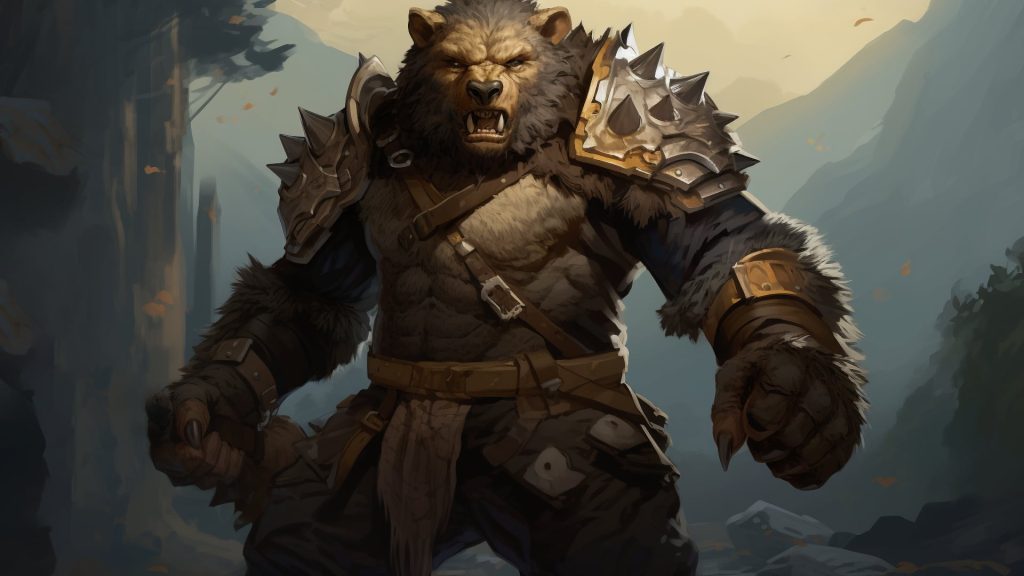
The Fighter is, by design, essentially a blank slate that is customized into what you want to be using the subclass. Perhaps more so than most other classes, a Fighter is defined by the subclass you choose, so picking the right one is important for realizing your character concept and combat potential.
Champion
This subclass is intended to be a barebones Fighter that adds as little complexity as possible. It’s a great subclass for players new to the game or wanting to play a more simplified character for any reason. It will perform adequately, but is behind the power curve of other subclasses and requires you to build around getting more damage and effects when you land critical hits.
Improved Critical 3 – Getting crits is just plain fun, so an ability that increases your chance of critting from 5% to 10% per attack is pretty nice. This only warrants a 3 because how good this ability is, relies on how much you invest into it. A Champion should be looking to gain advantage as often as possible, as well as getting as many bonus dice to their critical hit damage as they can.
Remarkable Athlete 3 – This feature is like a more restrictive version of Jack of All Trades; it’s nice for patching up the physical skills you’re bad at, but what seals the rating for this ability is it applies to initiative rolls.
Additional Fighting Style 4 – At worst, this is a +1 AC or small damage bump, if you’re able to use the styles from Tasha’s, this feature opens up a variety of buffs to you, including blindsight and a Battle Master maneuver.
Superior Critical 3 – Much the same as Improved Critical, this is only as valuable as how much you put into your crits.
Survivor 3 – Although a significant boost to your survivability, ideally the formula would be more generous for this ability. This is held back by only taking you back up to half health, although the higher your overall hit points, the better this ability is.
Battle Master
A very popular subclass, especially for multiclass dips, this archetype diversifies what the Fighter can achieve using mundane maneuvers rather than adding magic. The short rest nature of the Battle Master allows for frequent use of your maneuvers, whilst also being forgiving if you burn through your pool of Superiority Dice too quickly. Two things to note here are a lot of the scaling of the Battle Master comes built into the early features, and the designers seem to have just forgotten to give them an 18th level capstone ability. The PHB maneuvers will be covered after the individual features.
Combat Superiority 5 – Here’s the core mechanic at the heart of this subclass and it’s a great core: you get enough maneuvers you won’t feel starved for choice but you’ll still need to wait to get all the ones you want, and you’ll get enough Superiority Dice to splurge on heavy novas or use conservatively throughout your entire day of adventuring with that short rest recharge. The scaling here feels appropriate, with more maneuvers and SD coming at 7th and 15th level, with additional maneuvers also at 10th. If that wasn’t great enough, your save DC scales off the physical stat of your choice, allowing you to be SAD. The real power of this ability is based on the maneuvers you choose and how you use them, but the potential is great.
Student of War 3 – It’s a ribbon, but it comes alongside the fantastic Combat Superiority; ideally it’d be a skill instead of a tool but this subclass can’t have everything.
Know Your Enemy – 2 – A very thematic ability, but incredibly niche in practical use and yields vague information at best. Especially in comparison to what some other subclasses get at this level, a poor ability. What saves this ability from being a 1 is it comes along with an additional SD and two additional maneuvers, so all is not lost.
Improved Combat Superiority 3 – Just some scaling for your SD and comes alongside two new maneuvers at 10th level. To put this increase into perspective, every increase in die size equates to +1 damage on average if the maneuver used adds the SD for damage. Okay, and necessary scaling, but we should have seen more at this level.
Relentless 5 – Your subclass is built around using maneuvers, guaranteeing you can do so at least once per combat is great, and allows you to spend SD to your heart’s content.
PHB Maneuvers
Maneuvers compatible with ranged attacks will be marked with *.
Commander’s Strike 1 – Potentially good damage if you have a Rogue in the party, or a Paladin willing and able to smite, but its downfall is being far too expensive. A Superiority Die, one of your attacks, your bonus action, and your ally’s reaction for a single attack? No, thank you.
Disarming Strike* 2 – Extra damage to the attack is nice, and the opportunity to disarm an opponent can completely change the course of a fight. This only gets a 2, however, as your enemy needs to use a weapon or focus for it to be useful when there’s plenty of monsters out there that use neither to make this a reliably useful maneuver.
Distracting Strike* 4 – Additional damage and setting up an ally with advantage to hit that creature? An excellent mix of supporting allies and buffing your own damage. The only thing holding this back from being a 5 is the potential for that advantage to go to waste if no one else in the party attacks that creature.
Evasive Footwork 2 – Potentially nice for escaping or getting to an ally in need without having to use the Disengage action. This is pretty niche though, ideally, this would have come with a 10ft or greater movement speed bonus, or the AC boost would have lasted until the start of your next turn.
Feinting Attack* 5 – Giving yourself advantage on an attack of your choosing and getting SD damage if you hit? This is great for high AC opponents, Great Weapon Master users, some Sharpshooter users, and countering disadvantage.
Goading Attack* 4 – A nice tanking option with added damage to sweeten the deal, what’s holding this back from a 5 is the chance of failure. There are multiple abilities in the game which allow this kind of effect without requiring a saving throw.
Lunging Attack 2 – Impossible to rate this as a 1 when it gives you more damage, but this is incredibly niche. Inappropriate for skirmishing unless you want to spend all of your SD doing nothing but this to cover all of your attacks. Best chosen at higher levels when you’ve already gotten what you want, and used to hit opponents you couldn’t quite reach that turn otherwise.
Maneuvering Attack* 4 – A great tool to have in your back pocket which could save the lives of your squishier comrades whilst hastening the death of your foes.
Menacing Attack* 4 – Damage and a good debuff as long as the enemy isn’t immune to Frightened? That adds up to one good maneuver; this doesn’t hit a 5, however, as a not insignificant number of monsters are immune to this condition.
Parry 5 – Only a 3 if you’re a Strength-based Fighter but for Dexterity Fighters, this is a good defensive option that could save your life.
Precision Attack* 5 – No added damage, but sometimes you just need to hit, y’know? This is best for those looking to leverage the additional damage from Sharpshooter and Great Weapon Master. Or those perpetually forsaken by the almighty dice gods.
Pushing Attack* 2 – Potentially valuable if you’re fighting near the edge of a drop or you have allies who use spells like Spike Growth, but a bit niche, especially with the restriction of Large and smaller creatures.
Rally 2 – If you’ve invested in a decent Cha modifier, this can keep some of your squishy associates from getting, well, squished. Two important things to note: You cannot use this maneuver on yourself, and as there is no listed expiry for the temp hp, they last until the ally takes a long rest. The latter makes this an excellent way to use unspent SD.
Riposte 4 – A great way to punish people for daring to strike at you, the harder you hit the more this is worth, the harder to hit you are, the more often you’ll have the chance to use this.
Sweeping Attack 2 – This is saved from being a 1 by adding some limited ability to deal with crowds, however, it’s so reliant on positioning for such little damage, I can’t recommend this for one of your initial three maneuvers.
Trip Attack* 4 – Additional damage and the opportunity to knock the enemy prone to prevent escape and enable advantage for melee party members, potentially including yourself, makes for an excellent maneuver. A limit of large or smaller holds this back from being a 5. For ranged weapon users, it should be used as your last attack so you don’t impose disadvantage on yourself. This can also be used to knock flying enemies out of the air as long as they lack the hover trait.
Eldritch Knight
If you’re looking to play a gish then look no further, the Eldritch Knight combines Wizard-like spellcasting with the robust martial chassis of the Fighter. Whilst Intelligence isn’t a required stat for this subclass, it’s recommended to at least have a 14 so you’re not completely shut out from using spell attack and DC-based spells. Recommended spells for this subclass include Booming Blade, Absorb Elements, Magic Missile, Shield, Shadow Blade, and Fly.
Spellcasting 4 – Adding spellcasting to the Fighter was always going to be a great mix, this only gets a 4 due to the school restrictions and the extremely slow spell slot progression of being a three-quarter caster.
Weapon Bond 4 – Never being without your weapon is an excellent ribbon ability for a martial; great for infiltration, prison breaks, and keeping weapon-based artifacts away from bad guys. This would be a 5 if it allowed you to use a bonded weapon as a spellcasting focus.
War Magic 2 – A feature that can be worth taking if you try to make the best of it, combinations like Booming Blade and a melee attack are really the highlight of this feature.
Eldritch Strike 2 – To get the most out of this ability you really need to have a decent Intelligence and spend a free spell choice on a debuff like Blindness/Deafness. To use this with a damage AOE you’d really have to spread your attacks out amongst a group, which is less than ideal.
Arcane Charge 4 – The ability to teleport when you use your Action Surge is a nice bonus, especially as you can choose to teleport before or after the second action. This allows you to get in position to cast an AOE to benefit from Eldritch Strike, or to chase down enemies if you’ve already dealt with the ones near you.
Improved War Magic 3 – Significantly more versatile than War Magic, especially since you can potentially position yourself with Arcane Charge after having cast your spell. You have enough spell slots (10) at this level to potentially get a fair few bonus action attacks across the adventuring day.
Purple Dragon Knight (Banneret)
Often forgotten as it was published in the SCAG, but not republished in a later book, the Purple Dragon Knight (PDK) is intended to be a party support and face subclass. The features themselves are often regarded badly as they build on your existing abilities, without giving you additional uses of those abilities. As such, at times it can feel as if you don’t have a subclass at all. If you wish to play a PDK, it’s recommended you choose some feats to support being a pillar of the party, such as Inspiring Leader and Chef, and taking either the Protection or Interception Fighting Style so you have an at-will way of assisting your allies.
Rallying Cry 2 – The range of this ability is great, and if you’re only a party of four adventurers, it can work well. A good point of comparison for the amount of HP restored is the Aasimar’s Healing Hands ability, which restores your level to a single creature, as an action, once per long rest. The downside to this ability is being unable to revive someone that is at 0HP, and the chance of having party members injured that you can’t heal. This will be an issue in a party of five or more, a party that has companions such as familiars and Animal Companions, or one that travels and fights with NPCs, such as sidekicks.
Royal Envoy 4 – Gaining an additional skill and doubling your proficiency in Persuasion adds some out of combat utility to your Fighter, whilst supporting the fluff of the subclass.
Inspiring Surge 2 – The value of this ability heavily depends on the composition of your party, if you have a Rogue, Paladin, or a PC that uses Sharpshooter or Great Weapon Master this ability can add a significant amount of damage over the course of the adventuring day.
Bulwark 1 – This is the kind of ability that can completely turn a TPK situation around, unfortunately, however, it’s so niche in its application, it’s hard to give it anything higher than a 1. This would have been better if it applied to all saves, not just mental.
Arcane Archer
If you’re looking to play a nature-themed archer who weaves magic with their attacks, but don’t want to play a Ranger, this subclass is for you. The Arcane archer often receives criticism for having too few uses of its Arcane Shot and lack of scaling of the Arcane Shot options. How scarce the uses of the Arcane Shot feel to you will be dependent on your table; if you fall into the DMG guidelines of 6-8 encounters with 2 short rests per adventuring day, you can think of it as one Arcane Shot per encounter.
Arcane Archer Lore 5 – A choice of skill and cantrip, even if the choice is rather limited, is a very good ribbon ability that supports the theme of the subclass.
Arcane Shot 4 – Ideally this would be three uses per short rest instead of just the two, but this feature gives the Fighter access to magical effects, including AoEs which is nice. Important note: Arcane Shot originally required you to use a magic arrow, this was later changed via errata to work with any arrow. The individual shot options will be covered after the main subclass features.
Magic Arrow 5 – Not flashy but important; this means you’re not reliant on a supply of magic arrows or finding a magic bow when faced with monsters who have resistance, or maybe even immunity, to non-magical BPS.
Curving Shot 4 – An excellent accuracy boost, especially if you’re picking up Sharpshooter. This is only a 4 as it won’t help you against single enemies or in combats where enemies are spread out far between.
Ever-Ready Shot 5 – Given you only get two shots to begin with, this ability is sent by the god of archery!
Arcane Shot Options
Banishing Arrow 4 – Literally a mini-Banishment spell, this can give the party a valuable round to deal with other monsters, or just prepare for the return of a big bad.
Beguiling Arrow 4 – Bonus damage mixed in with a protective rider gives you a very potent shot option. The downside here is the PC protected by this arrow will lose its protection the moment they do anything to the target, but at least the healer won’t die, right?
Bursting Arrow 5 – Not only does this give you an AOE option that uses force damage, but there’s also no save! It’s not a lot of damage for an AOE, but considering there’s no save for half and the arrow’s normal damage will still apply it is appropriate.
Enfeebling Arrow 4 – The damage is nice as always and the reduced attack damage can save your party members from a world of hurt. Unfortunately, it only applies to weapon attacks and targets a traditionally strong monster save, which keeps this from being a 5.
Grasping Arrow 5 – This is an excellent shot option for locking down an opponent, not only are you reducing their speed but you’re giving them their own personal Spike Growth-like effect to encourage them to stand still. Be aware the poison damage is fairly likely to be resisted, or completely ignored by a lot of creatures, but the poison is more a bonus to the control effect and piercing damage.
Piercing Arrow 4 – A very situational shot option, but the ability to target Dex instead of AC can be valuable, this also gives you the option of hitting multiple enemies and ignoring cover. It should be noted that this is all cover, not just half and three-quarters cover like Sharpshooter would allow you to ignore.
Seeking Arrow 2 – If you are dealing with an enemy that is successfully hiding from you this can be valuable, however needing to have seen them within the last minute, needing a path to the creature, and being stopped by full cover for only an additional 1d6 damage is just bad. The situation where you’d want to use this arrow is very niche to begin with, I’d certainly recommend against taking it as one of your starting options.
Shadow Arrow 3 – So close to being a great option, yet so far. As this only restricts the target’s vision further than 5ft it won’t be of help to any melee party members, or any members that get chased into melee by the creature. If it instead just imposed the Blinded condition this would easily be a 4 if not 5.
Cavalier
A subclass themed as riding a mount, and is certainly better at it than most, but doesn’t actually require it. This is a Fighter who excels at tanking, with multiple options for drawing attacks towards them instead of their allies and to punish others for ignoring them. If you want to play this subclass, you’ll need a high Strength and as high a Constitution score as you can afford, it’s also advised to use a weapon with the reach property.
Bonus Proficiency 5 – Gaining another skill (or language) is always a nice ribbon ability, especially when you’re already getting so much at this level.
Born to the Saddle 4 – Another ribbon, but an essential one, after all, how much of a Cavalier would you be if you didn’t ride a mount better than the average PC? Only a 4 because Mounted Combatant is still a desirable feat if you want to keep your mount around, ideally this ability would have allowed you to protect your mount.
Unwavering Mark 5 – This ability gives enemies a real incentive to attack the Fighter rather than anyone else, and adds some damage across the day to boot. As you mark a creature with a hit, but there is no limit to the number of creatures you can mark; this ability scales in usefulness as you gain more attacks as a Fighter and as you increase your Strength score. This is a fantastic ability, partly because it keys off of a physical stat, it’s just a shame it locks all cavaliers into being Str focused if they want to make the most of it.
Warding Maneuver 4 – A reaction bonus to AC when someone is hit, with a worst-case scenario of resistance to the damage? This is a great feature only held back by needing to be within 5ft of your allies and using your Con modifier. On the one hand, this is a good thing: the higher your Con, the more HP you have to tank with! On the other, this is a secondary stat that isn’t flashy to increase, unlike stats that use attacks or skills.
Hold the Line 5 – This feature contains a part of the Sentinel feat and allows you to take a swipe at someone trying to run past you, or maneuver around you. This is fantastic not only as a tool to keep people from passing you, but also to give you an opportunity to mark a monster who’s just trying to run past you to the squishy allies you’re protecting.
Ferocious Charger 2 – Very thematic for a subclass themed around being mounted, but it doesn’t make the cut. You won’t always have the opportunity/space/movement to move ten feet before an attack, that attack won’t always hit, and even if it does, Strength is typically a strong monster save. When you pull this off, it can be combat-changing as you would follow it with at least two attacks at advantage, but in general, this isn’t an ability you can reliably use, and that makes it bad.
Vigilant Defender 3 – Potentially this is a lot of damage in a single round, but it requires multiple monsters moving within five feet of you in a turn, which doesn’t seem likely unless you primarily adventure in ten-foot-wide corridors.
Samurai
Interested in playing a Fighter who can mingle with nobility whilst standing fast in the face of impossible odds to defeat your enemies? Then the Samurai is for you! This subclass offers a significant increase in accuracy, durability, and social ability. Wisdom is advised as a secondary stat to get the most out of the 7th level feature but isn’t required.
Bonus Proficiency 5 – Skills to round out a Fighter’s out of combat toolbox are always a welcome addition.
Fighting Spirit 4 – Being able to give yourself advantage on your weapon attacks and temporary hit points is a match made in martial heaven. It’s advised to use this ability in conjunction with your Action Surge to make as many attacks at advantage as possible. The limiting factor holding this back from being a 5 is only having three uses, this makes it difficult to ration throughout the day and the temp hp could do with some scaling between 3rd and 10th level.
Elegant Courtier 5 – A bonus to a social skill and proficiency in a save that becomes increasingly important as levels increase, an excellent feature.
Tireless Spirit 5 – Always having at least one use of Fighting Spirit is a huge boost to your accuracy and durability, as well as a weight off your mind as you no longer have to use it sparingly!
Rapid Strike 5 – An additional attack that only costs your advantage? That’s a lot of damage, especially for users of Sharpshooter and Great Weapon Master. What makes this ability great is it doesn’t need to be advantage from your Fighting Spirit, it can come from anywhere including shoving a target prone. It’s important to note if you are using this with Fighting Spirit, whilst you lose advantage from one of your attacks, the attack you gain can still benefit from the advantage you get that turn. This means at 15th level a Samurai can use Fighting Spirit to make four attacks, three of them with advantage.
Strength Before Death 5 – Getting an entire turn, in the middle of someone else’s, is certainly better than laying down to die! I advise against using Fighting Spirit if this feature is triggered, as the temp hp won’t stop you from going down again. Once you hit this level, you should try and conserve Second Wind so you can heal yourself on your bonus turn.
Echo Knight
Born from the ever-popular Critical Role, this archetype allows you to make a double of yourself using time magic. This subclass offers a lot of mobility and options not commonly available to a Fighter, whilst maintaining a solid base of damage. Increasing your Con modifier as high as you can is heavily recommended for this subclass.
Manifest Echo 5 – This feature is really a whole mix of abilities your Echo delivers for you, the most significant for a Fighter is at-will short-range teleportation. That said, the meat of this feature is the ability to attack from somewhere you’re not and control the battlefield with distant opportunity attacks. This allows you to take advantage of cover, beneficial auras of your allies, and so on, whilst not compromising your ability to deliver attacks. This ability having no limit easily carries this to a 5.
Unleash Incarnation 4 – If getting your echo wasn’t enough, you also get additional attacks from it! This is only a 4 as it’s tied to a secondary stat which will realistically be a +3 or even a +2 for most Fighters for a while.
Echo Avatar 5 – Getting to use your echo as a familiar, but with ten times the range is great for scouting. It’s worth noting that RAW, there’s no reason why you can’t teleport yourself a greater distance when using this ability, however, it has been stated this is not the RAI, so buyer beware.
Shadow Martyr 4 – Being able to take an attack on behalf of an ally with your Echo is a great tanking ability, but this only gets a 4 as it’s only once per short or long rest and ensures your Echo will eat up even more of your bonus actions.
Reclaim Potential 4 – Getting temp HP from someone destroying your echo is great, however, at this level, the formula isn’t great compared to other sources of temp hp. For context, this would give you on average 10 or 11 temp HP per use depending on your Con mod; at this level, a Samurai is getting a reliable 15. Tying this to your Con, along with the mediocre amount of temp HP holds this back from being a 5.
Legion of One 4 – Trust me, I understand this feature sounds cool, but mostly amounts to not needing to use your bonus action quite as often, as well as giving you some additional angles of attack and greater potential of opportunity attack. The main benefit here really is extra use of Unleash Incarnation when you roll initiative.
Psi Warrior
If you want to play a Jedi, this is the way to do it! A subclass heavily based on using Psionics to achieve telekinetic effects like damage, protection, forced movement, and increased mobility. Due to the reliance of the subclass on proficiency bonus for scaling, this is multiclass friendly, but I would advise against multiclassing too heavily as increasing the size of your Psionic Energy Dice is important for your scaling too. Intelligence is needed for this subclass; it’s recommended you start out with a +3 if possible and aim to max it out at some point in your progression. If you start with lower than a +3, then you should aim to get it to that point at least before level 10. Now, as far as joining the dark side, you’re on your own with that!
Psionic Power 5 – Your pool of Psionic Energy Dice might feel a bit small at first until you get to 5th level, but should see you through your adventuring day as long as you remember to use the bonus action recharge every short rest. Protective Field offers a significant protective ability for yourself and your allies, Psionic Strike offers a nice burst of force damage and Telekinetic Movement offers some utility and protective options. The strength of Telekinetic Movement is being able to pull a party member out of the reach of a monster without provoking an attack of opportunity, oh, and retrieving your lightsaber sun blade. The reliance on Intelligence is unfortunate, but does give a great deal of reliability to your abilities, rather than trusting your offering to the dice gods was enough that week.
Telekinetic Adept 5 – Adding a couple of control options to Psionic Strike is a nice upgrade; having such a high flying speed, even if it is only for your turn, is a huge boost to a Fighter’s mobility and out of combat problem-solving. What ensures this feature is a 5 is efficiency, it’s not just adding more cost to your limited pool of Psionic Energy Dice: One ability improves the value of spending a die on an existing ability, whilst the other is free once per short or long rest, with the option of spending dice to do it more often.
Guarded Mind 3 – This is pretty niche, but charmed and frightened are fairly common monster-imposed conditions that can be very debilitating, so it warrants more than just a 2.
Bulwark of Force 5 – A bonus action to give yourself and your party +2 to your AC and Dex saves for a minute, without needing concentration, is a fantastic party buff.
Telekinetic Master 5 – Gaining access to a thematic 5th level spell as a Fighter is already great and a higher level spell than Eldritch Knights will ever gain access to. Allowing you to make a bonus action weapon attack every turn you’re concentrating on Telekinesis makes this an amazing ability that allows you to balance offense with control. The fact you can spend a single Psionic Energy Die to recast this 5th level spell is just the big, juicy cherry on top. Note: This ability using Intelligence is no longer considered a negative, as by the time you gain this feature, you would have had six ASIs, and this is plenty to max your attack stat, grab whichever feats you want, and still get Int to a +4 if not +5.
Rune Knight
In Dungeons and Dragons, runes have long had an association with giants. This subclass allows you access to a variety of effects using runes, from control to social interaction. It also provides a moderate damage increase, whilst making you more and more of a giant yourself. Soon enough, your party won’t stop asking how the weather is up there, so be warned! Increasing Constitution to at least a +4 is heavily recommended with this subclass.
Bonus Proficiencies 4 – Extra proficiencies are always welcome to round out a Fighter out of combat, Giant is a bit of a niche language depending on your table.
Rune Carver 5 – The bread and butter of the subclass, this gets a 5 based on all runes giving an active and passive benefit, as well as the number of runes scaling at a reasonable pace, and it being one of three features at this level. The individual runes will be reviewed after all the subclass features, I will note it is a shame there isn’t better higher-level support, with the level-gated runes becoming available at 7th level and no new runes gained after 15th.
Giant’s Might 5 – A very thematic ability that provides a small damage bump, as well as improves your ability to grapple. The number of uses scales throughout your progression with proficiency, making this ability friendly toward those of you who are multiclass fiends. It’s a nice touch that this ability doesn’t rely on you having the space to become large, avoiding making it dependent on your environment.
Runic Shield 5 – A great tanking ability with which to protect your party members, which gets a decent number of uses. As this cannot be used on yourself this would normally be a 4, but it’s supported by gaining another rune at this level, as well as gaining access to the level restricted runes.
Great Stature 2 – A damage increase which is worth an average of 1 additional point of damage a turn is very anemic. The only thing saving this from being a 1 is the gaining of an additional rune at this level.
Master of Runes 5 – A huge power boost that comes alongside your 5th and final rune, a great ability that should make you feel like a powerhouse and true master of your runes.
Runic Juggernaut 4 – The damage increase is incredibly meager, and there’s no balance reason why it couldn’t have been 1d12 at least at 18th level. The real power of this ability is becoming Huge (if size allows), and the increased reach. Great for handsy Fighters who like to grapple, and particularly nice for those already using reach weapons. Strength Fighters definitely get more opportunities out of this feature than Dexterity-based Fighters. On an amusing note, the Enlarge/Reduce spell could make a Rune Knight at this level Gargantuan in size, talk about getting too big for your boots.
Rune Options
Cloud Rune 4 – A good tanking ability that can allow you to redirect attacks, including nasty crits, back at other enemies, or towards the PC best equipped to handle it if no other monsters are available as targets. The passive bonuses would be nice for a Fighter going for a bit of a Roguish feel or looking to actually take levels in Rogue.
Fire Rune 5 – A nice bit of damage added to your hit, with the potential for both control and damage over time. Whilst fire is a fairly common resistance and immunity, the fact this rune can still restrain a creature immune to fire, allows it to be universally useful. It targets a strong save, so if you’re interested in this one, prioritize your Con progression. The passive ability is very niche in general but can be extremely useful if you pick up Thieves’ Tools proficiency from your background.
Frost Rune 2 – Good for grappling and if you know a monster has a nasty effect that targets your Strength or Constitution saves, although they should both be high saves already. The passive is mostly useful for the intimidation aspect, but even with that, this entire rune is just too niche to be worth a higher rating.
Stone Rune 5 – The active ability is like a single target Hypnotic Pattern spell, except there’s no way to end the effect without making a successful saving throw. This is a great control ability that only takes your reaction to trigger, and comes packaged with superior darkvision and a good social buff. To get the most out of this rune play a race that lacks natural darkvision; a Goliath would fit this and be very appropriate to the giant theme.
Hill Rune 5 – Resistance to a common damage type at all times, and a bonus action to gain resistance to the most common forms of damage? Excellent durability buff, not as tempting on a dwarven Rune Knight.
Storm Rune 5 – Immunity to being surprised is a nice way to stay alive, the advantage on Arcana checks is not of much use unless you have a positive Int or get Arcana proficiency from somewhere. The active ability is very nice, however, allowing you to balance buffing allies, with debuffing enemies as you see fit.
Fighter DnD 5E Race Choices Guide
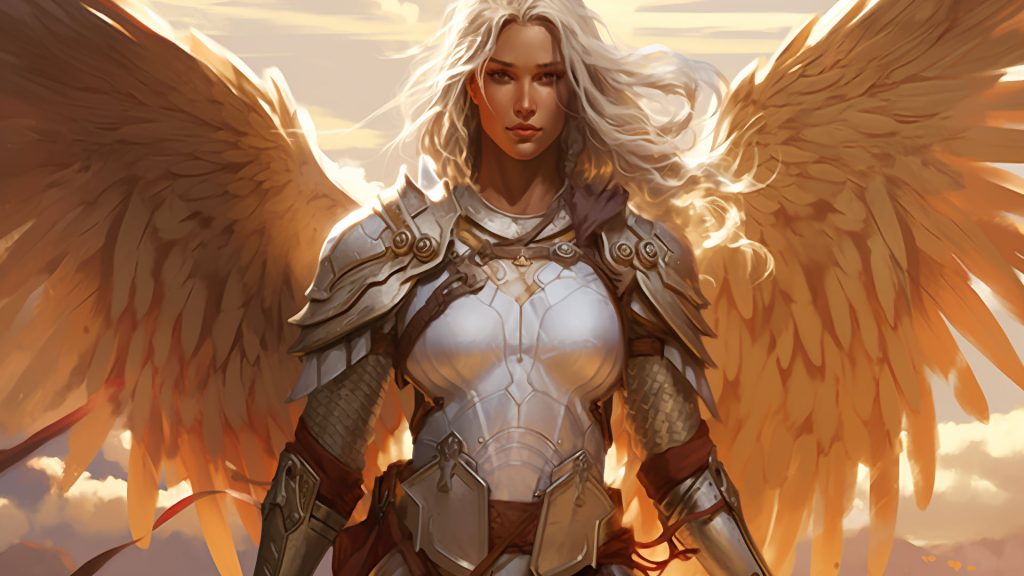
Races are good places to pick up abilities for certain character concepts, so if you’re thinking about playing a Fighter build but that race isn’t rated well here, it doesn’t mean your particular combination wouldn’t work or be fun to play. Like I said previously, it’s actually pretty difficult to make a truly bad character in 5e.
Here are some examples of strong race choices for a Fighter:
Shadar-kai Elf 5 – Darkvision, a Dex bump, Fey Ancestry, and Trance make a solid package for any Dexterity-based Fighter, particularly an archer with the potential for Elven Accuracy. Great stats, a good resistance, and a bonus action teleport that will also make you more durable? Excellent choice.
Half-Orc 5 – Good stats, better crits, and even better durability.
Tabaxi 4 – Excellent mobility, good skills, and some nice extras. The only thing holding this back from being a 5 is the Cha bump and no direct offensive or defensive boost.
Fighter 5E Feats Guide
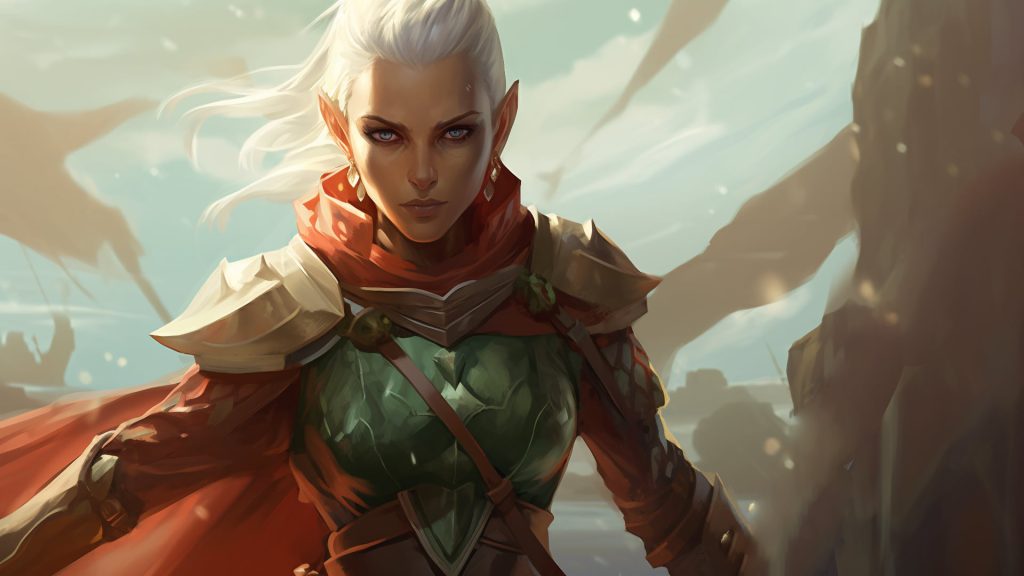
In this Fighter DnD 5E guide, we acknowledge that with more Ability Score Improvements (ASIs) than any other class and a low overall dependence on secondary stats, the Fighter is the ideal class to make use of feats. These feats can enhance your damage potential, solidify your role within the party, or introduce unique abilities you normally couldn’t access. Keep in mind that any feat requiring spell casting as a prerequisite or involving a stat that a Fighter doesn’t typically prioritize, like Intelligence for most Fighters, will be rated lower in this guide.
Here are some examples of strong feat choices for a Fighter:
Alert 4 – This is a great feat for both Str and Dex Fighters alike, making up for the low initiative score of the former and increasing the already respectable score of the latter. By reliably starting higher in initiative it gives the Fighter more control over their positioning, closing into melee to engage the enemy, putting themselves in a position to protect their allies, or even getting further away if they’re playing ranged characters. The immunity to surprise helps reinforce this and denying advantage to those you can’t see is a good defense, especially to any Fighters without darkvision.
Healer 4 – This feat is a lot of healing and with the extra ASIs the Fighter is the perfect candidate to pick it up if you so choose. In a party that lacks any dedicated healers, or has high attrition, this can be a 5.
Sharpshooter 5 – Whilst the +10 damage is what most people think of with this feat, and it is very nice, the ability to ignore most cover and fire at long range without disadvantage are the unsung heroes of this feat. It means a ranged Fighter will be consistent in their ability to hit enemies, even in a cover-strewn battlefield, and the Archery style makes getting the +10 damage more reliable than its great weapon cousin.
Elven Accuracy [Elf or Half-Elf] 5 – An excellent feat for ranged Fighters and melee crit fishing builds.
Fighting Initiate 5 – Double dipping Fighting Styles can be very appealing, allowing you to grab a maneuver, some extra damage, blindsight, or perhaps just a little AC boost. Especially useful for optimising throwing builds.
Fighter DnD 5E Multiclassing Guide
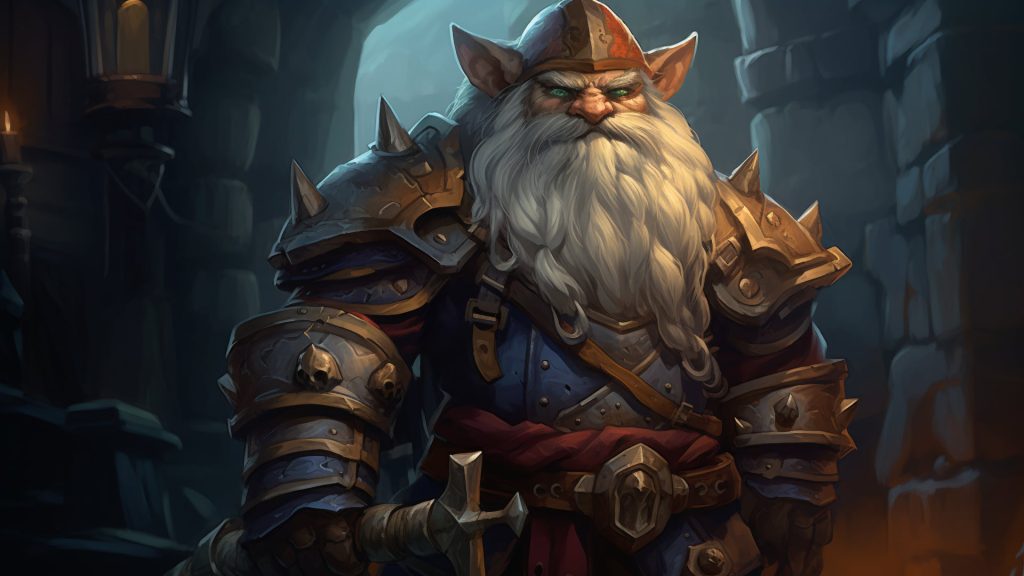
In this section of Fighter DnD 5E guide, we’ll review each class in terms of how good of a multiclass option they are for a Fighter, mentioning how many levels and what subclass (if any) would work best. This will form an integral part of our Fighter DnD 5E guide, which aims to provide detailed and comprehensive advice on optimizing your Fighter build. The ratings take multiclassing prerequisites into consideration; if a multiclass will require you to have a 13 in a stat other than Str or Dex, it will likely receive a lower score unless the stat is one you would already have at 13 or higher, for example Intelligence for an Eldritch Knight or Psi Warrior, or Wisdom for anyone wanting good Perception.
General multiclass tips for the Fighter:
- As an Extra Attack class, you ideally should wait until you have your 5th level in Fighter before multiclassing out, to ensure your general damage will be on par with other martials, and that your Second Wind has a decent flat bonus to it. If you are aiming for a feat or stat heavy build, you may want to hit the additional ASI at 6th level first, this will greatly offset the slower ASI progression most multiclasses suffer from.
- As a rule of thumb, you should look for things which apply to each hit, rather than just once per turn. This is because you have the potential to make 3 or 4 attacks regularly as a multiclassed Fighter, and up to 6 or 7 when using Action Surge.
- If you are using a class with a smaller Hit Die, and will be taking a significant amount of levels in that class, you should be aware your general durability is going to be lower as a result unless you have specifically corrected for this.
- Try to avoid abilities which rely heavily on a secondary stat you are not already well invested in.
- Classes which offer short rest recharge abilities will be more intuitive to use with some of your other Fighter abilities and allow you to nova more often. Long rest abilities will need to be rationed more carefully, but may provide more power when used.
- If magical weapons are not common at your table, then you should seek one of the many ways to give yourself one.
Artificer 3 – Access to spellcasting is nice, but the real goal here is to get access to your own magic items, stand out choices for infusions are: Returning Weapon for adding range to shield builds, Repeating Weapon for using a hand crossbow with a shield, and Repulsion Shield for using with those other things! For subclass it depends on your primary stat and how high your Int is, Alchemist gives you a random buff for any build, Armorer lets you ignore the Str requirement and Stealth penalty of heavy armor, whilst having a decent damage laser in your chest. One of those options does sound cooler than the other, admittedly.
Barbarian 5 – More HP, more damage, and resistance to the most common forms of damage you’ll come across, what’s Barbarian for oh yeah? OH YEAH! Rage should be conserved for tougher fights, as you likely won’t have enough to use it every combat. Reckless Attack should primarily be used to counter disadvantage, and preferably only whilst raging or you have access to defenses to mitigate the attacks. I would not advise going further than 4th level of Barbarian, unless the higher movement speed strongly appeals to you. The only subclass to really avoid is the Berserker because of the exhaustion penalty, otherwise you should pick based on what you want to enhance: Those looking for damage should look at the Zealot, for durability the Path of the Totem (Bear), for tanking the Ancestral Guardian and for versatility the Path of the Beast.
Bard 2 – To get the most out of this class you really need a higher Charisma score, especially as Font of Inspiration doesn’t come online until the 5th level of Bard, meaning you could be stuck with only one or two Bardic Inspiration Dice for the entire adventuring day. This class is best used as a skills and initiative boost with a two or three level dip.If going for three levels College of Lore gives you a huge skill boost and a decent defensive option, whilst College of Swords gives you another Fighting Style, a maneuver-like ability, and a 10 feet speed boost every time you take the Attack action. Bard spells which would be of use to you include Mage Hand, Healing Word, Unseen Servant, Heat Metal, and Invisibility.
Cleric 4 – The high rating for the Cleric comes from a combination of Wisdom being a desirable tertiary stat in general, and the Cleric gaining its subclasses at first level. This is best used as a one level dip unless there’s a Channel Divinity option that particularly interests you, like the War Domain’s Guided Strike if you use Great Weapon Master or Sharpshooter. The spells vary based on why you’re taking this dip, but Healing Word is a good in combat option, whilst Cure Wounds is better for out of combat recovery, and Bless being a good support option. Guidance is heavily recommended for the cantrip, as it’s stat agnostic and can help patch some of your skill weaknesses. Domains that stand out include Forge to make your own +1 weapon, the War Domain to get bonus action attacks, and the Twilight Domain to get an initiative oost.
Druid 2 – Whilst the prerequisite may be the same as the Cleric, you really need at least two levels in Druid to get something you wouldn’t be better off getting from the Cleric, unless you really like Goodberry. Wild Shape is a great scouting feature, though you’ll only have access to land based forms it should still come in handy. The two level investment makes this harder to recommend, especially as a lot of the Druid Circle abilities are heavily tied to total Druid level for scaling. If you do take two levels in this class Circle of the Land is the best option to get the most spellcasting, Circle of Spores can give a bit of added durability and damage (though you would really have to set up Symbiotic Entity before combat), and Circle of Stars can allow you to get the most out of any healing spell you pick up.
Monk 2 – Very niche for a dip, as this would shut down your ability to wear armor and lock out a lot of weapon choices for you, whilst a lot of the benefits of Monk are tied very heavily to staying Monk. This would be best on a Fighter who uses the Unarmed Fighting Style, preferably one which uses a racial source of AC, so that you can take advantage of the bonus action unarmed strike. If you are dipping Monk, two levels would be worth it for having the options of Flurry of Blows, Patient Defense, and Step of the Wind. It’s not really advised to go further than two levels, but if you do get a subclass, Open Hand would be a good option for the improved Flurry, or if you’re a weapon user the at-will abilities and looser weapon restrictions of the Kensei would be best.
Paladin 4 – This is a minimum of a two level dip, and the first level will be rough, and needing at least a 13 Cha also isn’t great, but for Str Fighters this can be a great dip to take. You’re not losing any HP, and you gain access to another Fighting Style, some prepared spell type spellcasting, Lay on Hands and what most people want here, Divine Smite. This can add a decent amount of nova damage and the ability to top off your own HP or pick up someone else. What holds this back from being a 5 is the pretty dead first level, and the heavy dependence on Paladin levels to scale Lay on Hands and spell slots. An Eldritch Knight will be able to get more out of this multiclass than other Fighters, but you should really multiclass out of Fighter at a level which is a multiple of 3 in that case, because of how spellcasting can round down. If you take 3 levels, the Oath of Vengeance is an exceptional choice for giving you advantage on all attacks against a single enemy once per short rest. Taking the 3rd level is more appealing if you can use the Tasha’s optional rule Harness Divine Power to regain a spell slot back from an unused Channel Divinity.
Ranger 4 – This is similar to Paladin in that you really need at least two levels to get any real benefit from it, however Wisdom is generally a better tertiary stat to have and it’s much more tempting to take a 3rd level for a subclass. For spells you should pick up Cure Wounds, Longstrider, Darkvision if you lack it, and Hunter’s Mark, which can give you a significant damage boost. If you go three levels deep into Ranger there’s a stand out choice in the Gloomstalker, giving you an initiative bonus, darkvision if you don’t have it, further darkvision if you do, situational invisibility, and most importantly for you as a Fighter, an extra 10ft of movement and additional attack on the first round of every combat. The additional attack gets doubled by Action Surge and even comes with an extra 1d8 damage if it hits. Other good choices are the Hunter for damage and Swarmkeeper for versatility.
Rogue 5 – Additional damage if you’re any kind of Dex build in the form of Sneak Attack, an additional skill, Expertise, and Thieves’ Tools is a fantastic first level dip. Taking a second level for Cunning Action can be a great at-will boon to your character, particularly if you play a melee Fighter. You ideally map out how many levels of Rogue you would like to take, as it can be a slippery slope especially, as unlike other martials, there’s no Extra Attack redundancy. 5th level Rogue can be appealing for Uncanny Dodge and, depending on your build, maybe even recommended. Subclasses of note for a Fighter include Swashbuckler for the initiative boost and more reliable Sneak Attack, and Arcane trickster for the spellcasting.
Sorcerer 4 – Whilst the downgrade to a d6 Hit Die is more significant, the ability to access great defensive options like Shield and Absorb Elements, as well as gaining subclass features at first level makes this a very appealing one level dip. Unless you’re an Eldritch Knight looking for Metamagic and more slots, I wouldn’t recommend more than one level. Subclasses you should look at first are the Divine Soul for the excellent Favored by the Gods and access to the Cleric spell list, which means you can grab Guidance as a cantrip. Clockwork Soul is also an interesting choice, Restore Balance can be a very useful ability and scales entirely with your proficiency bonus.
Warlock 4 – Well, this is more like a 4.5 as the Warlock is a better multiclass in most ways than the Sorcerer, but needing Charisma and primarily offering casting does hold it back from being a 5. The Warlock is great because you can grab your patron and a short rest recharging spell slot in a single level dip, but invocations and pact options give you compelling options for various builds if you want to go deeper. For patrons The Fiend should be avoided unless you have at least a +3 or higher Charisma modifier, Dark One’s Blessing isn’t very compelling on a dip without a good Cha mod. Hexblade can give you access to Shield and a damage bump in Hexblade’s Curse, whilst The Celestial can make you a decent emergency medic with excellent scaling on additional Warlock levels. The best option for most Fighters may be The Genie however, as you can deal additional damage which scales off of your proficiency bonus once per turn, as well as getting the positively nifty Bottle Respite. Invocations of interest include Devil’s Sight, Fiendish Vigor, and if you take Pact of the Blade, Improved Pact Weapon to give yourself a +1 weapon.
Wizard 4 – As the Fighter has two different subclasses which can benefit from Intelligence this is a good dip to pick up some utility and defensive options. You should primarily choose ritual spells that interest you, along with Shield, Absorb Elements and maybe Magic Missile for your spells. Going two levels in is recommended if you can afford to, as this gives you Arcane Recovery and your Wizard subclass. Subclasses that stand out for a Fighter are Divination for Portent, Chronurgist for the initiative boost and rerolls, but the best options for combat are the Baldesinger’s suite of buffs and the War Wizard’s excellent Arcane Deflection and initiative boost. The number of uses of Bladesong now scale based on your proficiency bonus, whilst the no levelled spell restriction of Arcane Deflection doesn’t really impact most Fighters, whilst giving you a very powerful defensive buff. It’s not recommended to go further than second level, unless you really want Misty Step and Shadow Blade.
What say you? Are you up in arms about his guide, or ready to take up arms because of it? Should you choose the path of the Fighter may your blades be sharp and your build choices true. Remember to always refer to your Fighter DnD 5E guide to make the best choices in your campaign. It is meticulously designed to give you the best possible understanding of the Fighter class in DnD 5E, and how to optimize your character for success. If you enjoyed this guide then check out our other DnD 5E class guides, until next time, good luck out there soldier.
